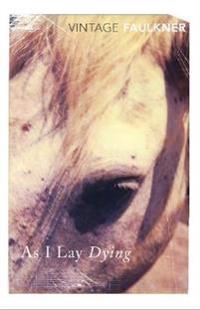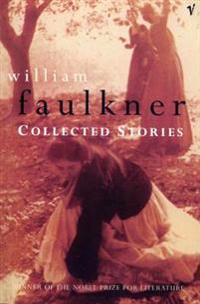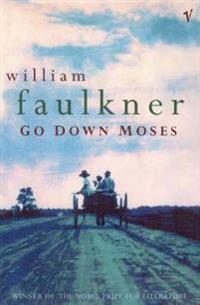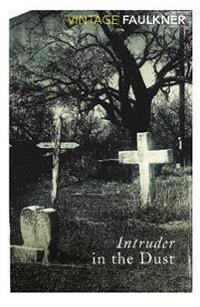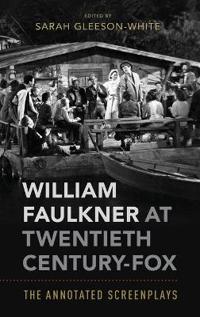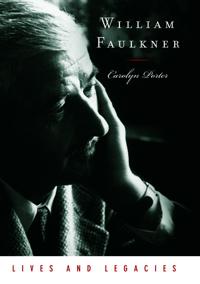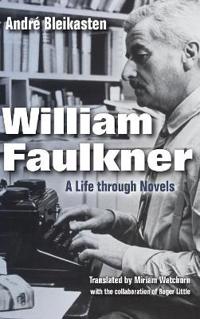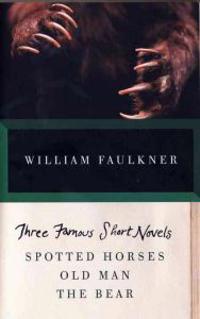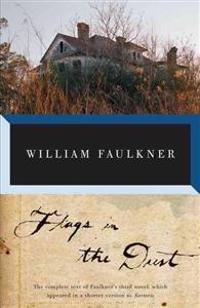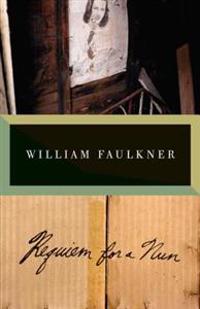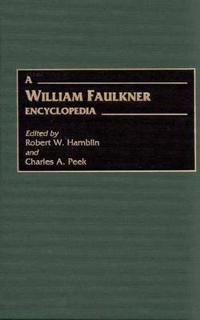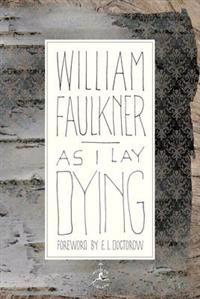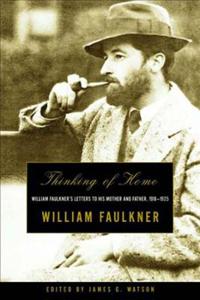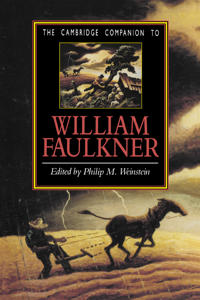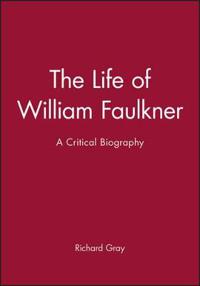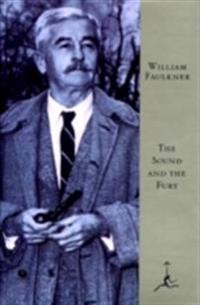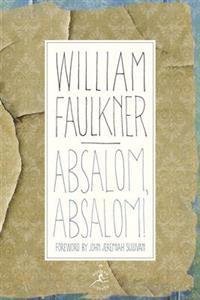Absalom, Absalom! (Storpocket)
avWilliam Faulkner
ISBN: 9780099475118 - UTGIVEN: 199501Quentin Compson and Shreve, his Harvard room-mate, are obsessed by the tragic rise and fall of Thomas Sutpen. As a poor white boy, Sutpen was turned away from a plantation owner's mansion by a negro butler. From then on, he was determined to force his way into the upper echelons of Southern society.[...]
As I Lay Dying (Storpocket)
avWilliam Faulkner
ISBN: 9780099479314 - UTGIVEN: 199601The death and burial of Addie Bundren is told by members of her family, as they cart the coffin to Jefferson, Mississippi, to bury her among her people. And as the intense desires, fears and rivalries of the family are revealed in the vernacular of the Deep South, Faulkner presents a portrait of ext[...]
Collected Stories (Storpocket)
avWilliam Faulkner
ISBN: 9780099546054 - UTGIVEN: 200905In this extraordinary collection, Faulkner captures the bitter tensions of America's Deep South. Beneath an unrelenting sun, the themes of pride, intense passion, the overbearing influence of women and the spectres of the past are played out in stories of memorable power. Faulkner's muscular, vivid [...]
Go Down Moses and Other Stories (Häftad)
avWilliam Faulkner
ISBN: 9780099546160 - UTGIVEN: 2009-08Includes seven dramatic stories which reveal Faulkner's compassionate understanding of the Deep South.[...]
Intruder in the Dust (Storpocket)
avWilliam Faulkner
ISBN: 9780099740315 - UTGIVEN: 1996-08Set in the deep south that provided the backdrop for all of Faulkner's finest fiction, Intruder in the Dust is the novel that marks the final phase of its author's outstanding creative period. The chronicle of an elderly black farmer arrested for the murder of a white man and under threat from the l[...]
William Faulkner at Twentieth Century-Fox
ISBN: 9780190274184 - UTGIVEN: 2017-04William Faulkner at Twentieth Century-Fox is a scholarly edition of the five screenplays that Faulkner wrote while under contract to Twentieth Century-Fox during the mid-1930s, and another he wrote in the early 1950s. It includes a lengthy introduction that explains exactly what Faulkner did as a sc[...]
William Faulkner and Southern History
ISBN: 9780195101294 - UTGIVEN: 1995-12William Faulkner more than any other writer is intimately associated with the South about which he wrote. This book reveals the man and his family and the ways in which southern culture and his own life were wound around one another in his greatest works.[...]
William Faulkner's "Absalom, Absalom!" (Häftad)
ISBN: 9780195154788 - UTGIVEN: 2003-06Absalom, Absalom! has long been seen as one of William Faulkner's supreme creations, as well as one of the leading American novels of the twentieth century. In this collection Fred Hobson has brought together eight of the most stimulating essays on Absalom, essays written over a thirty-year span whi[...]
William Faulkner (Inbunden)
avCarolyn Porter
ISBN: 9780195310498 - UTGIVEN: 200804In this newest volume in Oxford's Lives and Legacies series, Carolyn Porter, a leading authority on William Faulkner, offers an insightful account of Faulkner's life and work, with special focus on the breathtaking twelve-year period when he wrote some of the finest novels in American literature. Po[...]
William Faulkner
ISBN: 9780253022844 - UTGIVEN: 2017-04Writing to American poet Malcolm Cowley in 1949, William Faulkner expressed his wish to be known only through his books. He would go on to win the Nobel Prize for literature several months later, and when he died famous in 1962, his biographers immediately began to unveil and dissect the unhappy lif[...]
William Faulkner (häftad)
ISBN: 9780300033991 - UTGIVEN: 1985-07In this clear-sighted and enjoyable book, Cleanth Brooks, acknowledged to be "the best critic of our best novelist," introduces the general reader to Faulkner's most important novels and stories: The Sound and the Fury; As I lay Dying; The Hamlet; Go Down, Moses; Light in August; and Absalom, Absalo[...]
Three Famous Short Novels: Spotted Horses, Old Man, the Bear (Häftad)
avWilliam Faulkner
ISBN: 9780307946751 - UTGIVEN: 201109Flags in the Dust (Häftad)
avWilliam Faulkner
ISBN: 9780307946768 - UTGIVEN: 201202The complete text of Faulkner's third novel, published for the first time in 1973, appeared with his reluctant consent in a much cut version in 1929 as "Sartoris."[...]
Requiem for a Nun (Häftad)
avWilliam Faulkner
ISBN: 9780307946805 - UTGIVEN: 2012-01This sequel to Faulkner's most sensational, "Sanctuary," was written twenty years later but takes up the story of Temple Drake eight years after the events related in "Sanctuary." Temple is now married to Gowan Stevens. The book begins when the death sentence is pronounced on the nurse Nancy for the[...]
A William Faulkner Encyclopedia
ISBN: 9780313298516 - UTGIVEN: 1999-11Sometimes called the American Shakespeare, William Faulkner is known for providing poignant and accurate renderings of the human condition, creating a world of colorful characters in his fictional Yoknapatawpha County, and writing in a style that is both distinct and demanding. Though he is known as[...]
As I Lay Dying (Inbunden)
avWilliam Faulkner
ISBN: 9780375504525 - UTGIVEN: 200101One of William Faulkner's finest novels, "As I Lay Dying, " originally published in 1930, remains a captivating and stylistically innovative work. The story revolves around a grim yet darkly humorous pilgrimage, as Addie Bundren's family sets out to fulfill her last wish: to be buried in her native [...]
Thinking of Home: William Faulkner's Letters to His Mother and Father, 1918-1925 (häftad)
ISBN: 9780393321234 - UTGIVEN: 2000-12"How often have I lain beneath rain on a strange roof, thinking of home," says Darl Bundren in William Faulkner's As I Lay Dying. How much Faulkner himself is speaking may be suggested by this moving collection of nearly 150 letters. Written during his twenties, these letters describe Faulkner's fir[...]
William Faulkner: Seeing Through the South (Häftad)
avJohn T. Matthews
ISBN: 9780470672402 - UTGIVEN: 2011-12-31This succinct, yet comprehensive account of William Faulkner's literary career, novels, and key short stories offers an imaginative topography of his efforts to reckon with his Southern past, to acknowledge its modernization, and to develop his own modernist method.[...]
A Companion to William Faulkner (Övrig)
avEditor:Richard C. Moreland
ISBN: 9780470996881 - UTGIVEN: 2008-04-30The Cambridge Companion to William Faulkner (Häftad)
ISBN: 9780521421676 - UTGIVEN: 1995-01This collection of essays explores Faulkner?s widespread cultural import. Drawing on a wide range of cultural theory and written in accessible English, ten major Faulkner scholars examine the enduring whole of Faulkner?s oeuvre. Bringing into focus the broader cultural context which lent its resonan[...]
The Cambridge Introduction To William Faulkner (Pocket)
avTheresa M. Towner
ISBN: 9780521671552 - UTGIVEN: 2008-04-07An introductory overview of the works of one of America"s most important and complex novelists.
The Life of William Faulkner (Häftad)
avRichard Gray
ISBN: 9780631203162 - UTGIVEN: 199608Arguably the greatest novelist yet to emerge from the United States, William Faulkner was a white Southerner creatively obsessed with problems of personal identity, social change, religion, sexuality, race, and that elaborate circuitry of passion and power - the family.In this major reassessment, no[...]
The Sound and the Fury (Inbunden)
avWilliam Faulkner
ISBN: 9780679600176 - UTGIVEN: 199301"The Sound and the Fury, " first published in 1929, is perhaps Faulkner's greatest book. It was immediately praised for its innovative narrative technique, and comparisons were made with Joyce and Dostoyevsky, but it did not receive popular acclaim until the late forties, shortly before Faulkner rec[...]
Absalom, Absalom! (Inbunden)
avWilliam Faulkner
ISBN: 9780679600725 - UTGIVEN: 199402First published in 1936, "Absalom, Absalom " is Faulkner's ninth novel and one of his most admired. It is the story of Thomas Sutpen and his ruthless, single-minded attempt to forge a dynasty in Jefferson, Mississippi, in 1830. Although his grand design is ultimately destroyed by his own sons, a cen[...]


